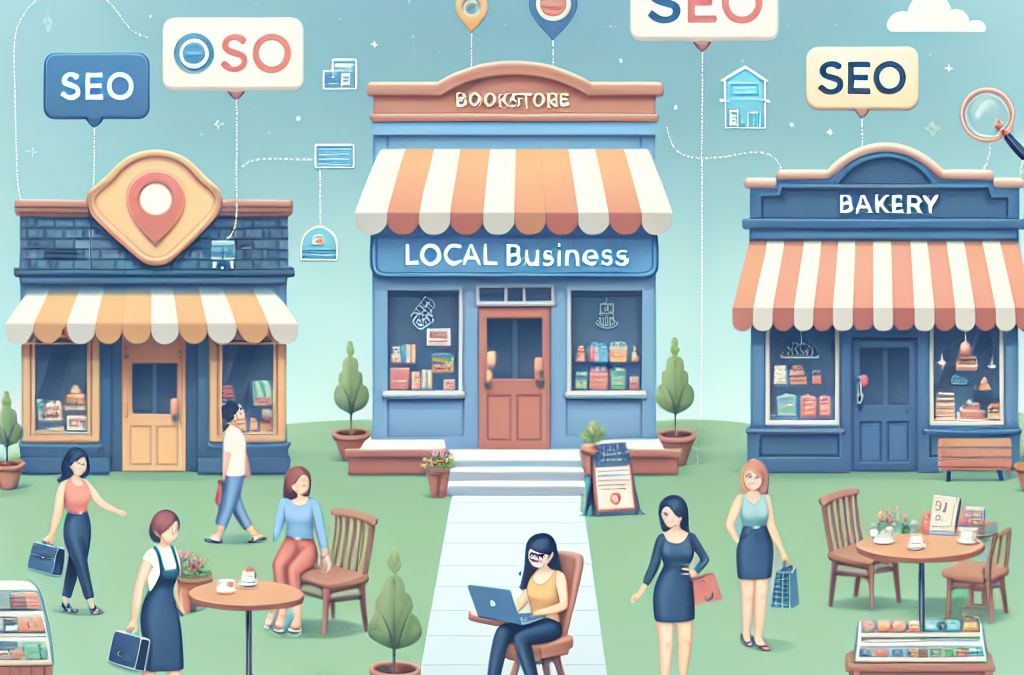Claim and Optimize Your Google Business Profile
Understanding Google Business Profile
So, let’s get real here! If you don’t have a Google Business Profile yet, you’re missing out on an absolute goldmine. From my experience, this has been one of the best steps you can take to boost your local visibility. You wanna be found, right? That’s the whole point of this SEO game!
Your Google Business Profile is basically your business card on the web. It shows up in search results and maps, giving potential customers crucial information like your hours, phone number, and direction. If you skip this step, it’s like opening a storefront and forgetting to put up a sign. How weird would that be?
When you log in, make sure to fill out every single section. Include your business category, add some eye-catching photos, and, trust me, keep your contact info updated. This isn’t just about looks—it’s about being easily accessible to those looking for services like yours.
Staying Consistent with NAP Information
Alright, let me break down NAP for you: Name, Address, and Phone Number. Sounds simple, right? But why do I keep emphasizing this? Because consistency is key! Whenever I see something like a different phone number on one platform compared to another, I immediately question the credibility of that business. Don’t give potential customers any doubt!
In my own business journey, I’ve found that having uniform NAP info across your online platforms—from your website to Yelp to social media—can significantly improve your search rankings. Google loves consistency, and it helps build trust with your customers.
Make it a habit to regularly check and update your NAP info. Don’t let a simple typo be the reason someone can’t find you or reach you. As they say, “an ounce of prevention is worth a pound of cure.”
Gathering and Responding to Reviews
Let’s chat about the ever-important reviews! I can’t stress enough how powerful customer reviews are for local SEO. They not only influence potential buyers but Google takes them into account when determining search rankings. In my experience, the more positive reviews, the merrier your business looks!
Encourage your satisfied customers to leave reviews. After a purchase, send a friendly follow-up email asking for feedback—maybe even throw in a small discount for their next purchase as a thank-you! But remember, you also need to respond to these reviews, whether they’re good or bad. It shows that you care, and it builds a connection with your customers.
Plus, when potential customers see you actively engaging with your reviewers, it builds up your reputation as a trustworthy business. Don’t just collect reviews; make it a point to showcase them on your website and social media, too!
Use Local Keywords Wisely
Identifying Local Keywords
When it comes to local SEO, keywords are like the bread and butter of your strategy. Finding the right ones can make the difference between being the best-kept secret in town or the go-to spot everyone talks about. From my experience, tools like Ubersuggest or even Google Keyword Planner can help pinpoint phrases your audience is searching for.
Look for those long-tail keywords that include local terms. For example, instead of just “pizza,” think “best pizza in [your city].” This adds a local twist, making it more likely for your business to pop up in relevant searches. Get creative!
Another tip I love is checking out what my competitors are doing. What keywords are they optimizing for? This can give you some great insight into what might work for you. So, do your homework and find those hidden gems!
Optimizing Your Website Content
Now that you’ve gathered some great local keywords, it’s time to weave them into your website content. But hold up! This isn’t about stuffing your site with keywords until it reads awkwardly. It’s got to flow naturally! When crafting blog posts, product descriptions, and service pages, think about how you can incorporate those local keywords organically.
For example, if you run a bakery, a blog post titled “The Best Cupcakes in [City] to Try This Weekend” serves two purposes. It’s enticing to readers and optimized with local keywords—total win-win! Plus, people love sharing local content.
Don’t forget about your metadata! Ensure your title tags and meta descriptions have those local keywords too. Google reads this information when ranking your page, and it can significantly affect your SEO performance.
Creating Location-Specific Pages and Content
This might sound like a big task, but trust me—it’s worth the effort! If your business serves multiple locations or regions, consider creating dedicated pages for each area. I’ve seen businesses double their traffic and engagement by simply zoning in on specific locations.
Each location page should have unique content that speaks directly to the audience in that area. Include local landmarks, events, or any collaborations with local businesses. It personalizes the experience and helps with keyword optimization!
And don’t stop there! Blogging about local events, news, or stories can attract local visitors to your site, and also show that you’re an active part of the community. It paints your business as a relatable, local choice rather than a faceless corporation.
Engage with Local Community and Networks
Networking with Local Businesses
This is where you can get your hands a little dirty, and I love it! Engaging with other local businesses can open up so many doors. Collaborate on events, offer cross-promotions, or just support each other on social media. I’ve found that local partnerships can amplify visibility and trust!
For example, I once partnered with a local coffee shop for an event. We both promoted it on our platforms, which increased our audience reach considerably. Plus, it made me feel good to support a fellow local business!
Always keep your eyes peeled for local networking events, community fairs, or meetups where you can showcase your business and meet potential collaborators. Building those relationships can create a strong support system for your growth!
Participating in Local Events and Sponsorships
Getting involved in local events is a fantastic way to boost your brand visibility. I can’t count how many people I’ve met at local festivals or charity events just by showing up and participating—it’s all about building that community presence!
Think about sponsoring a local sports team, donating to a charity event, or even setting up a booth at a community fair. It’s a great way to get your name out there and show that you’re invested in the community.
Plus, these activities can often result in local press coverage, increasing your visibility even more. It’ll not only make you feel good to contribute, but it will drive new customers through your doors. It’s about mutual growth!
Engaging on Social Media Platforms
Social media is where the magic happens, folks! Use platforms like Facebook, Instagram, and even TikTok to connect with your local audience. Share stories about your business, local events, and customer experiences. I’ve found this personal touch draws people in and builds loyalty.
Don’t just post and ghost! Interact with your followers, respond to comments, and join local groups. Engaging with your community online helps foster relationships that can drive foot traffic to your business.
Also, sharing user-generated content—like photos of customers enjoying your products—can boost your credibility and give your followers a sense of belonging. So get out there and be the friendly business owner! Show them the real you!
Track Your Progress and Adjust Strategies
Utilizing Analytics Tools
Okay, let’s get analytical! Once you’ve set everything into motion, it’s crucial to know how everything is performing. Using tools like Google Analytics can provide you with valuable insights about how visitors interact with your website. I always check where my traffic is coming from and what keywords draw visitors!
Metrics like bounce rate, average session duration, and conversion rates are key indicators of how well your local SEO strategies are working. If you notice certain pages aren’t performing as expected, don’t sweat it—use that data to make informed changes.
Remember, monitoring your progress helps tailor your strategies. What might have worked last month might need tweaking today, and that’s okay! We’re all learning as we go.
Assessing Local Rankings
Knowing where you stand in search results is vital, and it’s something I regularly keep tabs on. Are you showing up on the map pack? What about in organic search results? I like to use tools such as Moz or SEMrush to track my local rankings. It’s like a game—you can see how much you’ve climbed!
Keeping an eye on your rankings allows you to celebrate those victories and also acknowledge when things need adjustment. You may notice fluctuations due to seasonal trends or competition shifts. Stay proactive and make necessary changes so you can keep that upward momentum!
The beauty of local SEO is it’s a living strategy; there’s always room for improvement. The more informed you are about your rankings, the better decisions you can make for your business.
Gathering Feedback and Making Adjustments
Finally, don’t forget to gather feedback! Personally, I always value the opinions of my customers. Creating surveys or asking for feedback on social media can help understand what your audience likes or what needs tweaking. It’s all about adapting and growing!
Look for trends in the feedback you receive. Maybe customers are requesting a new service or expressing confusion about your hours. Use these insights to adjust your business operations—this is how you keep your customers happy and loyal!
In the end, your goal should be to create a seamless and engaging experience for your local audience. Gather all the data you can, listen to your customers, and don’t be afraid to pivot your strategies based on what works best!
Frequently Asked Questions
1. What is local SEO, and why is it important?
Local SEO is the optimization of your online presence to attract more business from relevant local searches. It’s important because it helps your business be found by potential customers in your area, driving foot traffic and increasing sales!
2. How do I claim my Google Business Profile?
To claim your Google Business Profile, go to the Google Business website, sign in or create an account, and follow the prompts to add or claim your business. Once verified, you can manage your profile and information!
3. How can I improve my local search rankings?
Improving local search rankings involves optimizing your Google Business Profile, maintaining consistent NAP information, gathering reviews, and using local keywords on your website and content. Engage with your community and track your progress regularly!
4. What types of content should I create for local SEO?
Creating location-specific blog posts, product descriptions that include local keywords, and engaging social media content that highlights local events can significantly improve your local SEO efforts.
5. Why is tracking my local SEO progress important?
Tracking your local SEO progress is key to identifying what’s working and what’s not. It allows you to make data-driven adjustments to your strategy, ensuring that you stay competitive and relevant in your area.


